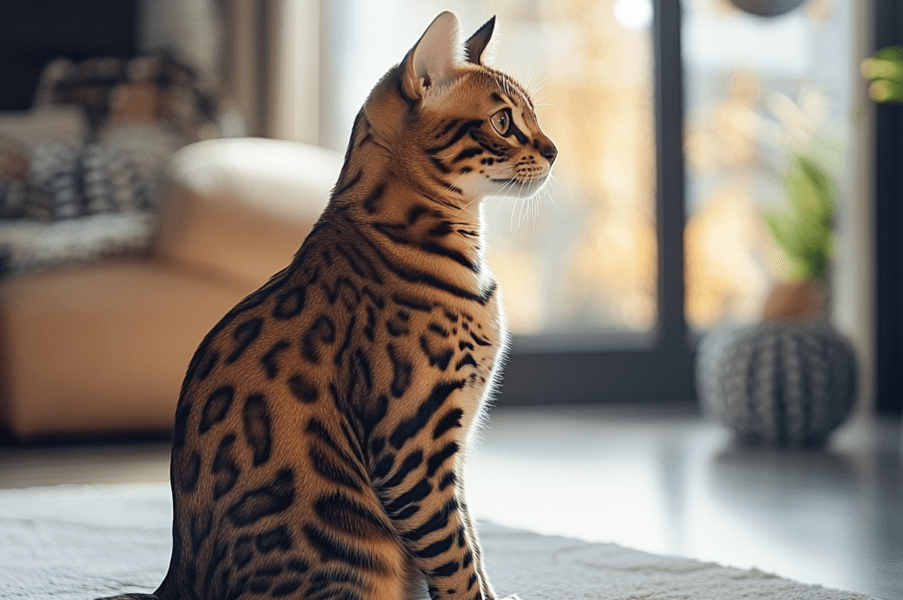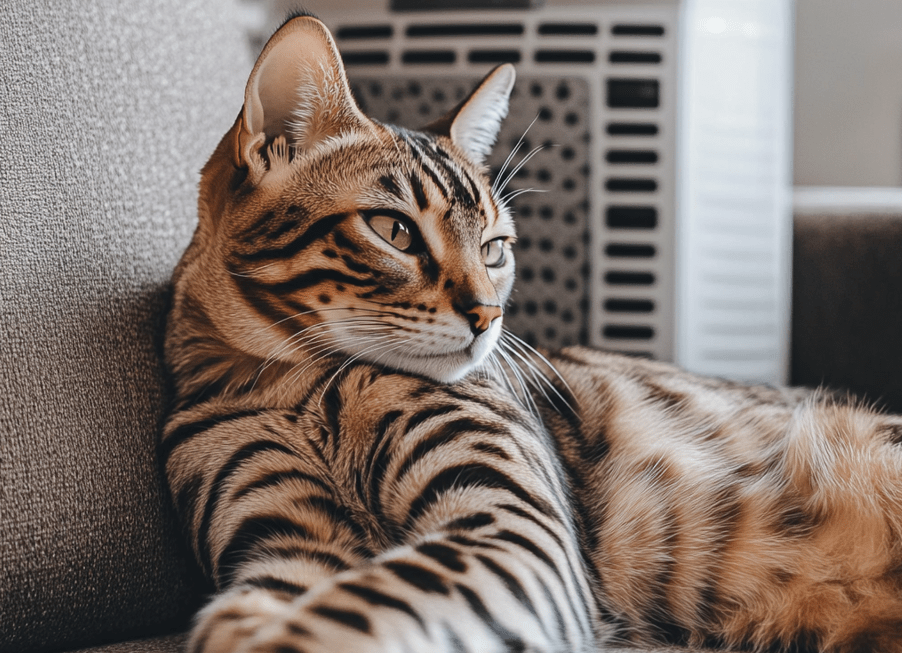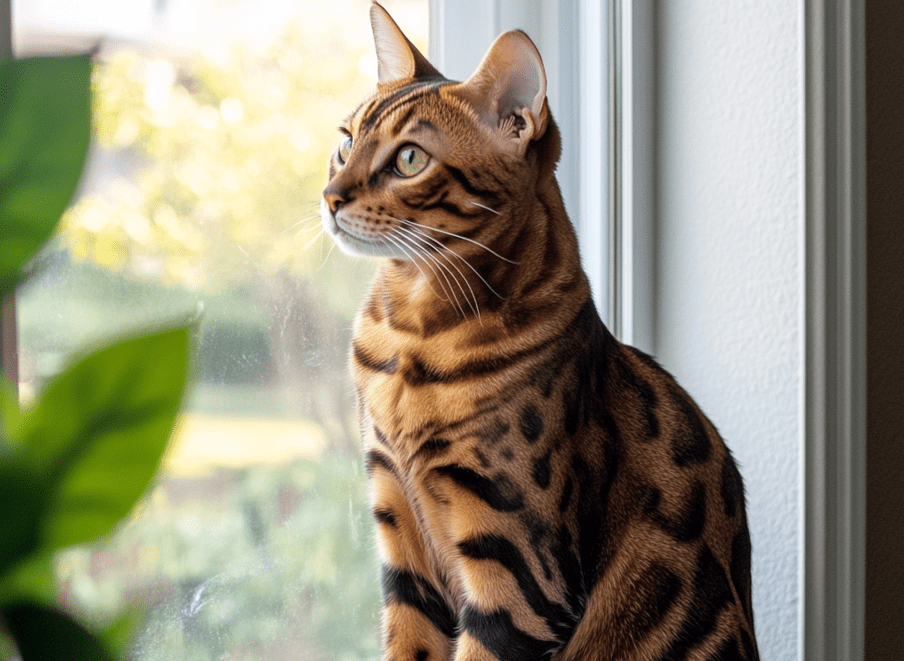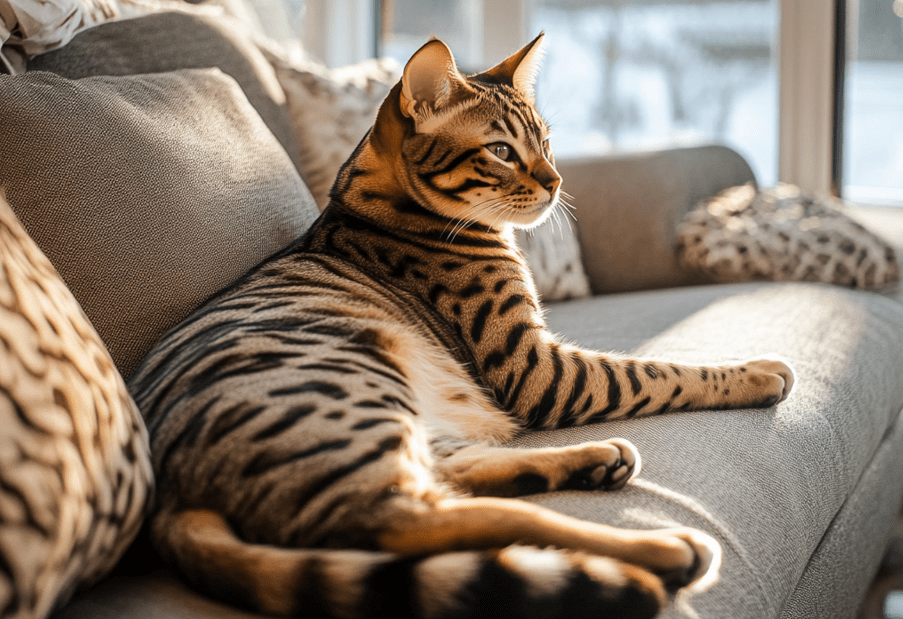
If you’ve ever wondered, “Why does my Bengal cat follow me everywhere?” you’re not alone. Bengal cats are known for their striking leopard-like appearance and vibrant personalities, often forming strong bonds with their owners. This comprehensive guide explores the reasons behind your Bengal’s constant companionship, offering insights into their behavior and practical bonding tips to strengthen your relationship. Whether your Bengal shadows you around the house or seeks your attention, understanding their motivations can deepen your connection and create a harmonious home.
Understanding Bengal Cat Behavior
Bengal cats are a unique breed, descended from the Asian leopard cat, which gives them a wild, energetic demeanor. Unlike many domestic breeds, Bengals are highly social, intelligent, and curious. Their tendency to follow their owners stems from a mix of instinct, affection, and environmental factors. Let’s dive into why your Bengal cat follows you and how to nurture this behavior.
1. Affection and Bonding
Bengals are deeply loyal and often form intense attachments to their owners. When your Bengal cat follows you, it’s likely expressing love and trust. They see you as their primary companion, akin to how they’d interact with a trusted member of their pack in the wild.
Signs of Affection: Purring, head-butting, or rubbing against you while following.
Why It Happens: Bengals thrive on interaction and view you as a source of comfort and security.
2. Curiosity and Playfulness
Bengals are naturally inquisitive, and their high energy levels drive them to explore their surroundings. If you’re moving around, your Bengal cat may follow you to investigate what you’re doing or to join in the “adventure.”
Example: Your Bengal might trail you to the kitchen, hoping for a treat or to play with a dangling dish towel.
Tip: Engage their curiosity with interactive toys to satisfy their need for stimulation.
3. Social Nature
Unlike more aloof breeds, Bengals crave social interaction. They often prefer to be near their owners rather than alone, making them prone to following you from room to room.
Behavior Insight: Bengals may vocalize (meow or chirp) while following to “talk” to you.
Why It Matters: This social behavior reinforces their bond with you and keeps them mentally engaged.
4. Seeking Attention or Resources
Your Bengal cat may follow you to signal a need, such as hunger, playtime, or access to their litter box. Bengals are smart and learn quickly that following you often leads to getting what they want.
Common Needs: Food, water, a clean litter box, or simply your attention.
Solution: Establish a routine to meet their needs, reducing attention-seeking behavior.
5. Territorial Instincts
Bengals have a strong sense of territory and may follow you to “patrol” their domain or ensure you’re part of their safe space. This behavior is rooted in their wild ancestry, where staying close to trusted companions ensured survival.
Signs: Your Bengal may mark you by rubbing their scent or stay close to monitor your actions.
How to Respond: Provide a secure environment with perches and hiding spots to boost their confidence.
Bonding Tips to Strengthen Your Relationship
To make the most of your Bengal’s desire to follow you, use these bonding tips to enhance your connection while addressing their unique needs. These strategies cater to their energetic, intelligent, and affectionate nature.

1. Engage in Interactive Play
Bengals need physical and mental stimulation to stay happy. Interactive play sessions mimic hunting, satisfying their instincts and strengthening your bond.
Recommended Toys: Feather wands, laser pointers, or puzzle feeders.
How Often: Aim for 15-20 minutes of play twice daily.
Example: Use a feather wand to mimic prey, letting your Bengal chase and pounce, which builds trust and fun.
2. Train Your Bengal
Bengals are highly trainable due to their intelligence. Teaching tricks or commands not only provides mental stimulation but also reinforces your role as their trusted leader.
Simple Tricks: Sit, come, or fetch.
Training Tip: Use positive reinforcement with treats or praise. Keep sessions short (5-10 minutes) to maintain their interest.
Benefit: Training deepens your bond and gives your Bengal a sense of purpose.
3. Create a Bengal-Friendly Environment
A stimulating environment keeps your Bengal engaged and less reliant on following you for entertainment. Provide vertical spaces, scratching posts, and interactive toys to satisfy their curiosity.
Must-Haves: Cat trees, window perches, and tunnels.
Why It Works: Bengals love climbing and exploring, which reduces boredom-driven shadowing.
Tip: Rotate toys weekly to keep their environment fresh and exciting.
4. Establish a Routine
Bengals thrive on predictability. A consistent schedule for feeding, play, and litter box maintenance reduces anxiety and attention-seeking behavior.
Sample Routine:
Morning: Feed, play, and clean litter box.
Afternoon: Short play session or training.
Evening: Interactive play and bonding time.
Outcome: A routine helps your Bengal feel secure, reducing excessive following.
5. Offer Affection on Their Terms
While Bengals are affectionate, they also value independence. Let your cat initiate cuddle sessions or petting to build trust.
How to Do It: Respond to head-butts or purring with gentle petting, but avoid forcing attention.
Why It Matters: Respecting their boundaries strengthens your bond and encourages positive interactions.
6. Use Puzzle Feeders for Mental Stimulation
Puzzle feeders engage your Bengal’s problem-solving skills, keeping them occupied and less focused on following you.
Options: Ball feeders, treat mazes, or DIY cardboard puzzles.
How to Introduce: Start with simple puzzles and gradually increase difficulty.
Benefit: Mental stimulation reduces boredom and promotes independence.
7. Socialize with Other Pets or People
If your Bengal follows you excessively, they may need more social outlets. Introduce them to other pets or family members to broaden their social circle.
How to Socialize: Gradual introductions with positive reinforcement.
Outcome: A well-socialized Bengal is less likely to fixate solely on you.
When Following Becomes Excessive
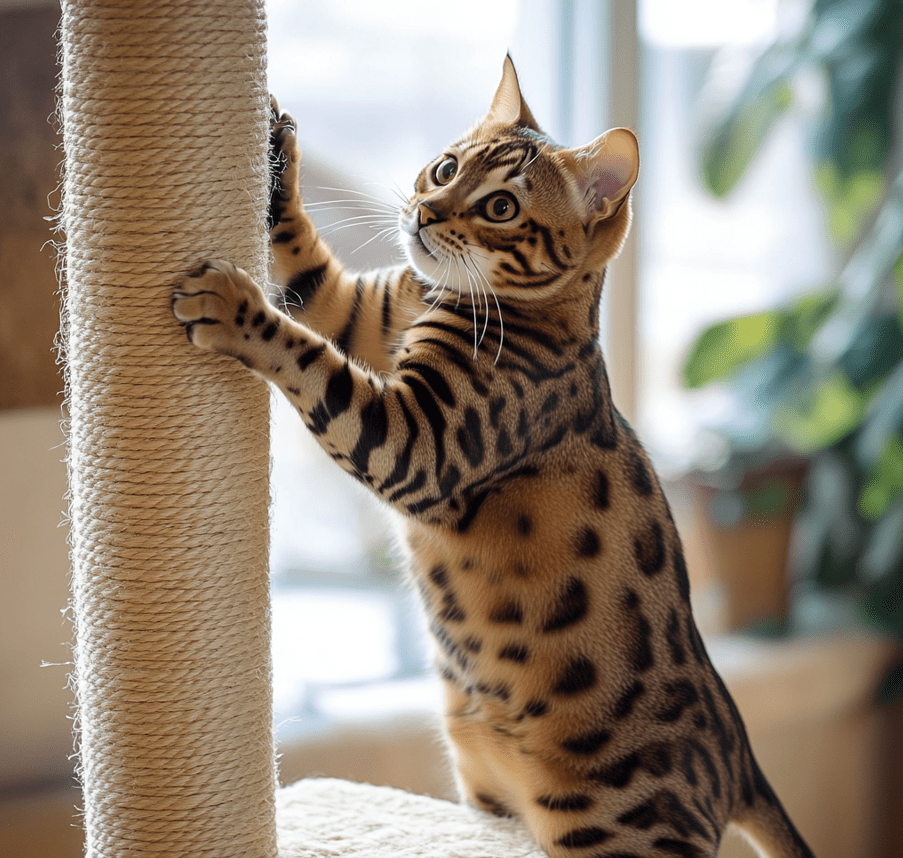
While it’s charming when your Bengal cat follows you, excessive shadowing could indicate underlying issues. Here’s how to identify and address potential problems:
1. Separation Anxiety
Bengals are prone to separation anxiety, especially if left alone for long periods. Signs include constant following, vocalizing, or destructive behavior when you’re away.
Solution: Gradually increase alone time, provide enrichment (toys, perches), and consider a pet camera to monitor their behavior.
When to Act: Consult a vet or behaviorist if anxiety persists.
2. Medical Issues
Sudden changes in behavior, like increased following, could signal health problems such as pain, thyroid issues, or urinary tract infections.
Signs to Watch: Changes in appetite, litter box habits, or energy levels.
Action: Schedule a vet visit to rule out medical causes.
3. Boredom or Lack of Stimulation
A bored Bengal may follow you out of restlessness. Ensure they have enough physical and mental outlets.
Fix: Increase playtime, add new toys, or create a stimulating environment.
Common Myths About Bengal Cats Following Their Owners
Myth 1: Bengals Follow Because They’re Needy
Truth: Bengals follow due to their social and curious nature, not neediness. They enjoy companionship and mental engagement, not just dependency.
Myth 2: Following Means They’re Unhappy
Truth: Following is often a sign of affection and trust. Only excessive or anxious behavior warrants concern.
Myth 3: Bengals Can’t Be Independent
Truth: With proper stimulation and a secure environment, Bengals can balance independence with their love for following you.
Conclusion
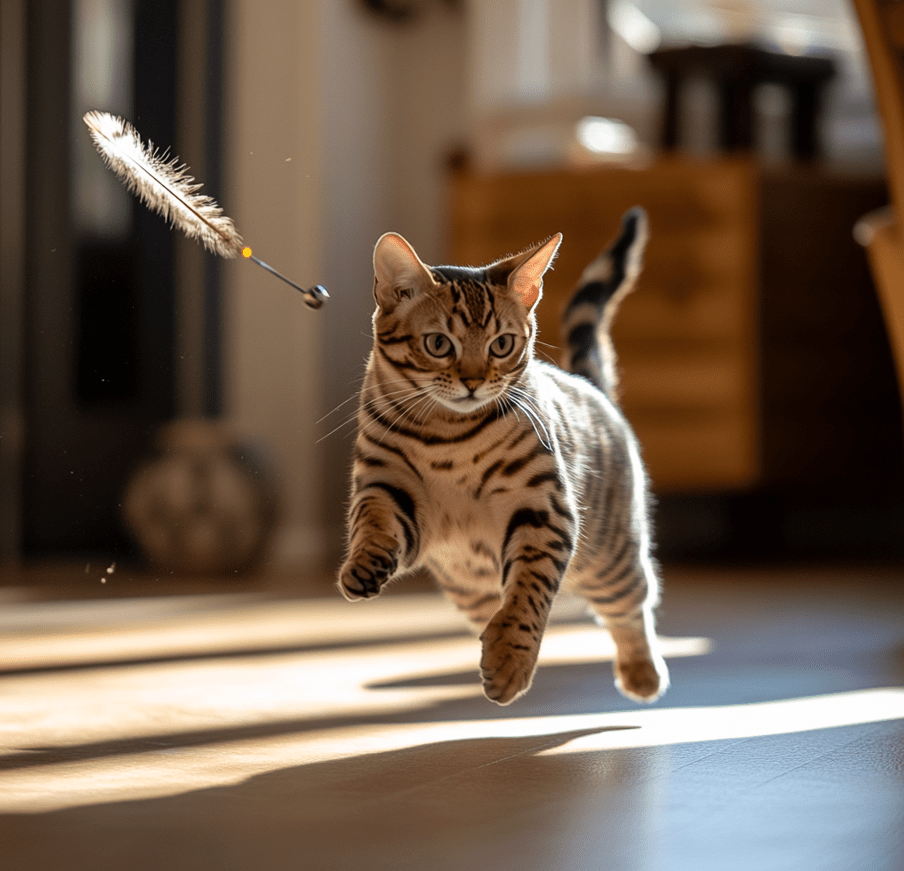
When your Bengal cat follows you everywhere, it’s a testament to their affectionate, curious, and social nature. By understanding the reasons behind this behavior—affection, curiosity, or instinct—you can nurture a stronger bond with your Bengal. Use interactive play, training, and a stimulating environment to keep them engaged and happy. If following becomes excessive, address potential issues like anxiety or boredom with the help of a vet or behaviorist. With these bonding tips, you’ll create a rewarding relationship with your Bengal, making their companionship a joyful part of your life.
For more insights on Bengal cat care, consult your veterinarian or trusted pet resources. Your Bengal’s love for following you is a gift—embrace it with understanding and care.

